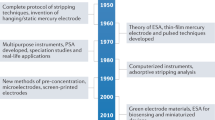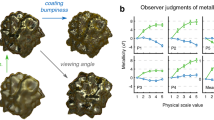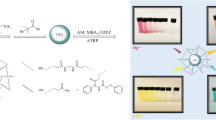Abstract
IN some current work using evaporated metal films, it became necessary to estimate small quantities of silver of about 2 × 10−5 gm. The method developed by Schoonover1 and quoted by Welcher2, the “B.D.H. Book of Organic Reagents” and others, seemed suitable. Preliminary experiments, however, indicated that the method was unreliable. The purpose of this note is to present some typical results of a subsequent series of experiments which show the unsatisfactory nature of the method.
This is a preview of subscription content, access via your institution
Access options
Subscribe to this journal
Receive 51 print issues and online access
$199.00 per year
only $3.90 per issue
Buy this article
- Purchase on Springer Link
- Instant access to full article PDF
Prices may be subject to local taxes which are calculated during checkout
Similar content being viewed by others
References
Schoonover, I. C., J. Res. Nat. Bur. Stand., 15, 377 (1935).
Welcher, F. J., “Organic Analytical Reagents”, 3, 421 (1947).
Author information
Authors and Affiliations
Rights and permissions
About this article
Cite this article
ALLEN, J., HOLLOWAY, D. Colorimetric Estimation of Silver. Nature 166, 274–275 (1950). https://doi.org/10.1038/166274a0
Issue Date:
DOI: https://doi.org/10.1038/166274a0
This article is cited by
-
Colorimetry in Chemical Analysis
Nature (1950)
Comments
By submitting a comment you agree to abide by our Terms and Community Guidelines. If you find something abusive or that does not comply with our terms or guidelines please flag it as inappropriate.



